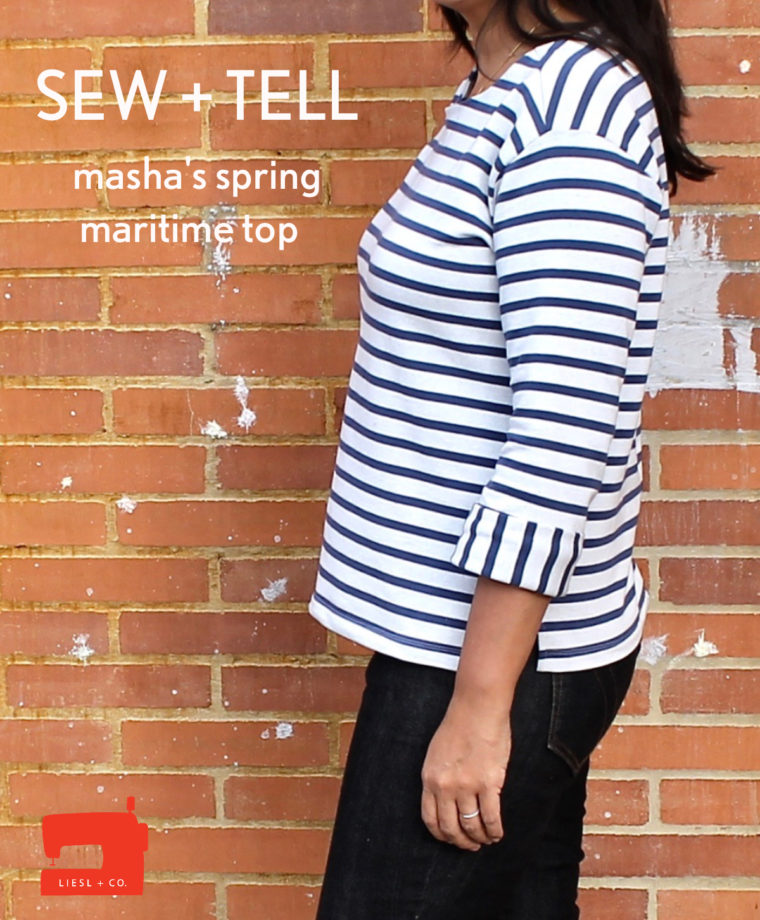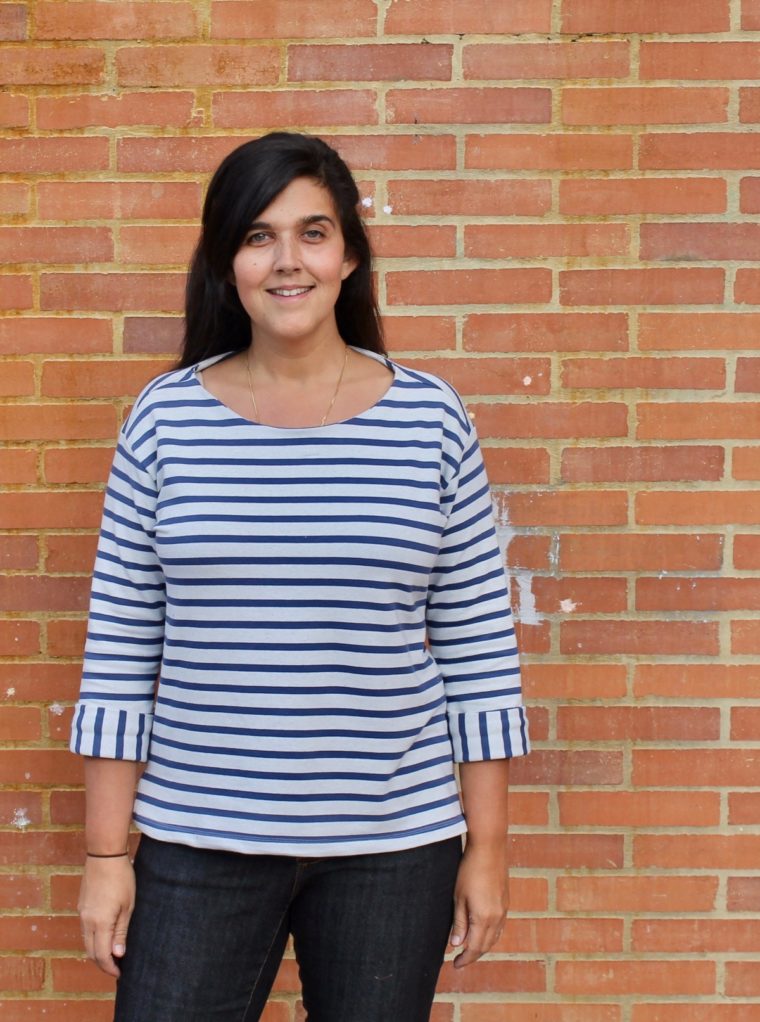There's something inherently cheerful about a striped boat-neck top—especially when spring starts to bloom. The Maritime Top embodies everything I’ve always wanted in a Garment during those fleeting moments when crocuses begin to emerge and the air feels just a touch warmer. It’s the kind of piece that makes you want to step outside and soak up the sun.
Living in Bogotá, where the climate remains spring-like year-round, I found myself longing for seasonal transitions. As someone who grew up on the American East Coast, the shift from winter to spring has always been my favorite time of year. Even though I didn’t experience this change while living at 8,770 feet in the Andes, I still wanted to celebrate it somehow. Sewing something special seemed like the perfect way to mark the occasion.

This was my first attempt at making the Maritime Top. I stumbled upon a 40-inch remnant of cotton French terry at a nearby store, and it was clear from the moment I touched it that this fabric had big plans for itself.
Before diving into construction, I knew I’d need to determine the right size. With a 36-inch high bust measurement, I fall into the 8 shoulder range for Liesl + Co. patterns (you can learn more about sizing here). My full bust measures 40 inches, so a Full Bust Adjustment (FBA) was necessary. However, I opted against adding a dart because the French terry fabric is relatively stable and wouldn’t require one. Instead, I chose a pivot-and-slide bust adjustment, which adds width without altering the silhouette too drastically. For those unfamiliar with this technique, I referenced a tutorial to ensure I executed it correctly. The result was a flattering fit—fitted enough in the bust area but loose enough below it.
Another challenge I encountered was adjusting the back piece. After measuring myself, I realized I needed both a 5/8-inch high round back adjustment and a 3/8-inch low round back adjustment, totaling 1 inch of additional length in the back. While this created a center seam, the improved fit made it well worth it. Additionally, I performed a 1/2-inch forward shoulder adjustment to better accommodate my posture.
Interestingly, the Maritime Top’s dropped shoulders meant I didn’t need to account for a full bicep adjustment—a rarity for me! If you’re interested in learning how to perform such an adjustment, Liesl’s tutorial is a great resource.
One final tweak I made was adding a sleeve cuff to the long-sleeved version. Instead of shortening the sleeves, I attached a 5-inch cuff by cutting two 10-inch strips of fabric matching the circumference of the sleeve opening. I joined these strips into a tube, stitched them to the sleeve hem, folded the cuffs in half, and secured them with my coverstitch machine. This allows me to wear the cuffs folded or unfolded, depending on whether I want to keep my arms warmer or cooler.
Aside from these modifications, I followed the pattern instructions closely. I tacked down the neckline facings at the shoulders using a machine and by hand at the front and back to prevent them from flipping outward.

Since finishing the top in early January, it’s become a staple in my wardrobe. Whether paired with jeans or tucked into a skirt, it’s the perfect balance of casual and polished. Have you tried making this pattern yet? There’s nothing quite like wearing a Maritime Top to herald the arrival of spring!
[Ad placeholder]
---
**Related Posts:**
(Here, you might list some suggested related posts based on tags or categories.)
Men's garments refer to clothing items specifically designed and tailored for men. This includes a wide range of clothing pieces such as shirts, pants, suits, jackets, coats, t-shirts, sweaters, jeans, shorts, and underwear. Men's garments can vary in style, fabric, color, and fit, catering to different occasions and personal preferences.
t-shirt, polo, Blazer,trouser
Shaoxing Harbour Textile&Garments Co., Ltd , https://www.sxharbour.com